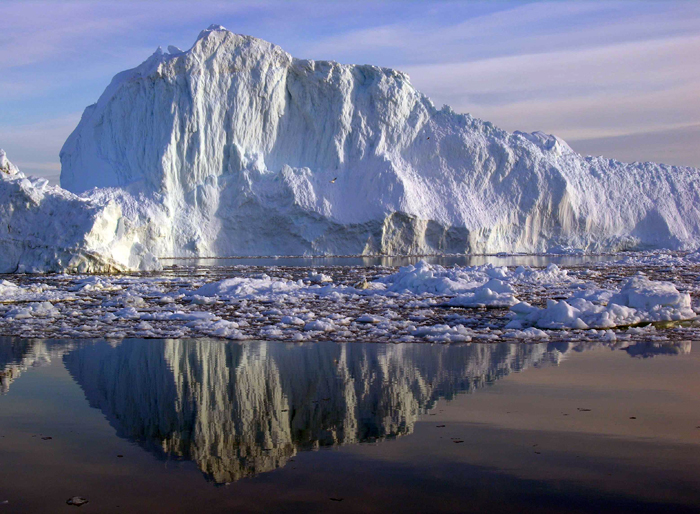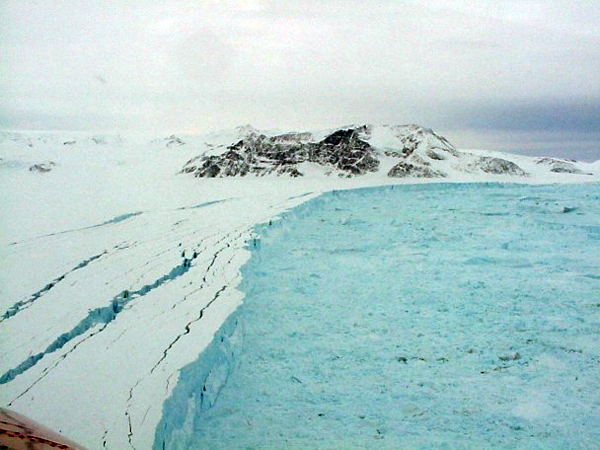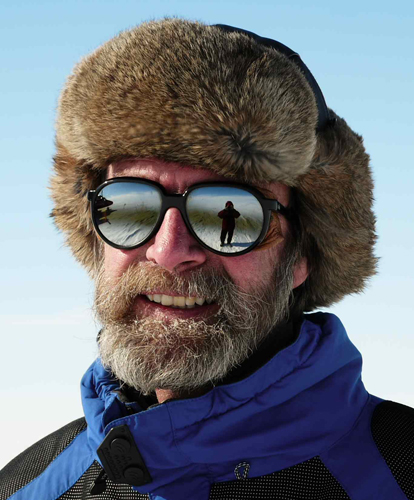|
On the groundSteffen, his graduate student Dan McGrath, and Ala Khazendar, a post-doc from Rignot’s group, will head south in October for the field component of the project, which includes collaboration with Chilean and British scientists. The logistics of the operation — flying and landing on the ice shelf, and then establishing a camp and setting up weather stations — have proven to be challenging. The U.S. Antarctic Program More Information
To jump to the other side of the thin but mountainous peninsula, Steffen and his team will need air support. Originally, the plan was to work with the Chileans to fly to the British Antarctic Survey (BAS) “We cannot wait that long because it’s beginning to melt on the ice shelf,” Steffen said. “You can’t land your Twin Otter on an ice shelf that starts to get wet; you get too much friction and can’t take off.” Instead, about two months ago, BAS volunteered to coordinate the entire operation, taking Steffen’s team and two British groups to the ice shelf, where they will share the same field camp and make complementary measurements. “In Greenland, I’m used to organizing my own logistics. … I just charter a plane and go where I need to go. In Antarctica, it’s not that easy.” The big task in this first of three field seasons will be the deployment of several 10-meter-tall automatic weather towers like the ones in Greenland, which record climate data such as precipitation and temperature. A GPS will measure the horizontal and vertical motions of the shelf. “We want to measure the tidal motion, so we go to millimeter accuracy,” Steffen said. In addition, the scientists will scout the underbelly of the ice shelf using ground-penetrating radar. The thought is that warmer ambient temperature — about 2.5 degrees centigrade in the last 50 years — alone isn’t breaking up the ice shelf. Steffen and other glaciologists believe a slightly warmer ocean is assaulting the ice from underneath, carving out huge cavities and channels that thin and weaken the shelf. “We have a warming climate, but the temperature doesn’t really penetrate all the way through an ice shelf,” Steffen explained. He has already observed the phenomenon in Greenland’s glaciers and floating ice tongues, similar to ice shelves but bounded by mountains. There he observed the ocean whittle away a half-kilometer-thick glacier down to 100 meters in places. In addition, melt pools form on top, changing the structure of the ice as it seeps down and refreezes. “If you do that over several seasons, you can warm up the ice body to a temperature not where it’s breaking but where the water can penetrate farther down. There must be weakening from underneath and from the top,” Steffen explained. “You only need a very small temperature change in the ocean, or a current change underneath the ice shelf, that’s able to carve out these bigger channels.” In the airNASA is funding the airborne component of the project, according to Rignot. He and Robert Thomas of EG&G Services at NASA’s Wallops Flight Facility A P3 aircraft from the Chilean Navy will carry a radar sounder from the Applied Physics Laboratory and NASA’s laser altimeter system, which is flown every year in Greenland. The radar can determine the thickness of the ice in some areas. The laser altimeter with centimeter accuracy will map the topography. NASA-funded airborne studies made similar radar passes in the region in 2002 and 2004, the latter part of a larger three-week expedition that included sites in Central and South America. Still, there are little data on the ice thickness, particularly of the 10 to 15 glaciers that feed into Larsen C. That’s because they’re deeply entrenched in narrow valleys, where the ice contains more cracks and possibly many water inclusions that absorb the radar signal “It makes it difficult when you want to model a system like this, and you’re limited from the start by the definition of its basic geometry,” Rignot said. NASA scientists will use the results of the project to develop models for the processes they measure. Rignot said he could not speculate as to when they might be able to create reliable models that will predict ice shelf breakup, glacier speedup and the subsequent rise in sea level. “I think we’re at the stage where the uncertainty is larger than before, because we realize that the existing models are not able to explain the current evolution of ice shelves and ice sheets. They are too simplistic,” he explained. “Hopefully, the Larsen C project will provide critical observation of that particular ice shelf.” Still, Rignot remains optimistic about filling in some vital data gaps over the next few years before Larsen C cracks apart and slips away into a thousand icebergs. “It’s going to be an exciting experiment because we have a lot of tools in hand to make some major advances in our understanding of what’s happening at Larsen C right now,” Rignot observed. “Hopefully, this will help us refine how these ice shelves are collapsing with time. Once they collapse, there is no return; our natural laboratory is gone.” NSF-funded research in this story: Konrad Steffen, CIRES; Eric Rignot, UCI and NASA Jet Propulsion Laboratory; Award no. 0432946 |



For USAP Participants |
For The Public |
For Researchers and EducatorsContact UsU.S. National Science FoundationOffice of Polar Programs Geosciences Directorate 2415 Eisenhower Avenue, Suite W7100 Alexandria, VA 22314 Sign up for the NSF Office of Polar Programs newsletter and events. Feedback Form |





